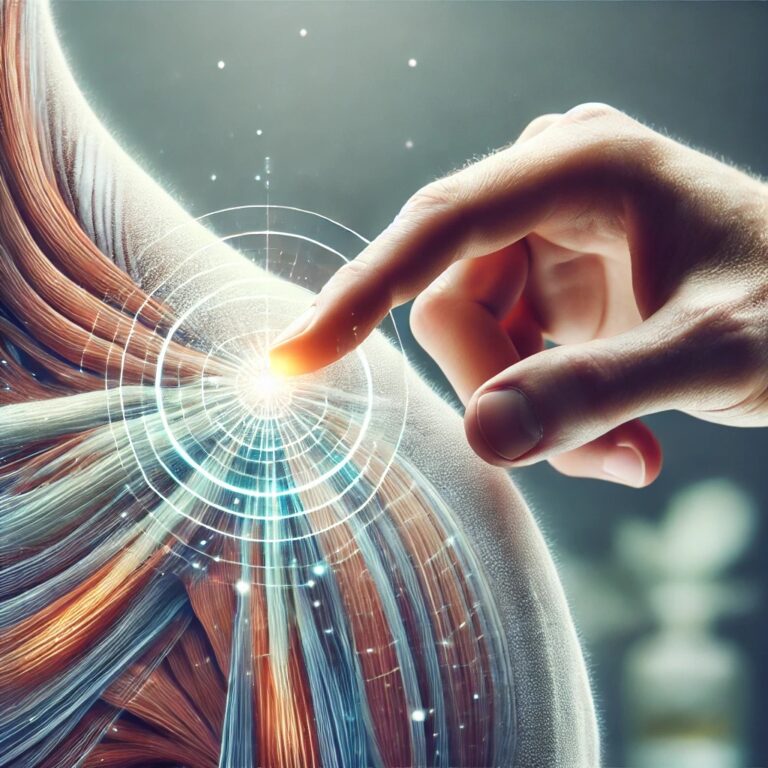
Massage therapy has long been recognized as a valuable tool for pain relief, relaxation, and overall well-being. Two of the most popular techniques used for addressing chronic pain and muscle tension are deep tissue massage and myofascial release. While these modalities share some similarities, they have distinct techniques, goals, and applications. Understanding the differences between deep tissue massage and myofascial release, as well as their unique anatomical benefits, can help individuals choose the best approach for their needs. Furthermore, these two techniques can work synergistically to provide comprehensive pain relief and mobility restoration.
What is Deep Tissue Massage?
Deep tissue massage is a technique that targets the deeper layers of muscles and connective tissues to release chronic tension and adhesions. This method uses firm pressure, slow strokes, and deep finger, knuckle, elbow, or forearm techniques to break up muscle knots, increase circulation, and improve overall muscle function. Unlike Swedish massage, which primarily focuses on relaxation, deep tissue massage aims to address underlying musculoskeletal issues and chronic pain conditions.
Techniques Used in Deep Tissue Massage:
- Slow, deep gliding strokes (effleurage)
- Friction techniques to break up adhesions
- Cross-fiber friction to improve muscle elasticity
- Trigger point therapy to release specific pain points
Benefits of Deep Tissue Massage:
- Improves blood circulation and oxygen flow to muscles
- Reduces chronic muscle pain and tension
- Helps with injury rehabilitation and scar tissue breakdown
- Enhances athletic performance by improving muscle function
- Reduces stress and improves overall relaxation
What is Myofascial Release?
Myofascial release is a technique that focuses on the fascia, the connective tissue that surrounds muscles, bones, and organs. This method aims to release fascial restrictions that can cause pain, stiffness, and limited mobility. Unlike deep tissue massage, which works on muscle fibers, myofascial release targets the fascia and applies sustained pressure to elongate and soften the tissue.
Techniques Used in Myofascial Release:
- Sustained, gentle pressure applied to restricted fascia
- Stretching and elongating connective tissue
- Using hands, knuckles, or specialized tools to release fascial tension
- Slow and steady movements, often without the use of oil or lotion
Benefits of Myofascial Release:
- Restores flexibility and range of motion
- Reduces chronic pain caused by fascial restrictions
- Improves posture by realigning connective tissue
- Helps with conditions such as fibromyalgia, migraines, and myofascial pain syndrome
- Enhances fluid movement within the body by reducing fascial stiffness
Key Differences Between Deep Tissue Massage and Myofascial Release
While both techniques aim to relieve pain and improve mobility, they differ in their approach and target tissues:
| Feature | Deep Tissue Massage | Myofascial Release |
| Target Tissue | Muscle fibers and deeper muscle layers | Fascia and connective tissue |
| Pressure Level | Deep, firm pressure | Gentle, sustained pressure |
| Techniques | Kneading, friction, trigger points | Stretching, slow compression, release |
| Primary Goal | Muscle relaxation, pain relief, increased circulation | Release of fascial restrictions, improved mobility |
| Best For | Athletes, chronic pain sufferers, injury rehabilitation | People with mobility restrictions, postural imbalances, chronic conditions |
How Deep Tissue Massage and Myofascial Release Work Together
Since muscles and fascia are interconnected, a combination of deep tissue massage and myofascial release can be highly beneficial. When used together, these modalities create a more comprehensive approach to pain relief and functional movement restoration. Here’s how they can complement each other:
- Preparing the Tissue with Myofascial Release – Before deep tissue massage, myofascial release can help soften and lengthen the fascia, making it easier to access deeper muscle layers without excessive discomfort.
- Breaking Up Adhesions with Deep Tissue Massage – Once the fascia has been addressed, deep tissue techniques can effectively work on the muscle knots, adhesions, and tension within deeper structures.
- Enhancing Recovery and Flexibility – Myofascial release can be applied post-massage to ensure that newly loosened muscles maintain their flexibility and proper alignment.
- Reducing Post-Treatment Soreness – Since deep tissue massage can sometimes cause soreness, myofascial release can help alleviate discomfort by restoring fluid movement and reducing inflammation.
Who Can Benefit from These Therapies?
Deep tissue massage and myofascial release are effective for a variety of individuals, including:
- Athletes looking to enhance performance and recover from muscle fatigue
- Office workers dealing with postural imbalances and chronic tension
- Individuals with chronic pain such as fibromyalgia, TMJ disorder, and myofascial pain syndrome
- Post-surgical patients needing soft tissue rehabilitation
- People recovering from injuries such as whiplash, sprains, and repetitive strain injuries
Choosing the Right Approach for Your Needs
If you are experiencing chronic muscle pain, tightness, or mobility restrictions, consulting with a licensed massage therapist can help determine whether deep tissue massage, myofascial release, or a combination of both would be most effective for you. Each therapy has its unique benefits, and when used together, they can provide profound relief and long-term improvements in movement and function.
Final Thoughts
Deep tissue massage and myofascial release are powerful therapeutic techniques that address musculoskeletal pain and dysfunction in different but complementary ways. While deep tissue massage focuses on breaking up muscle adhesions and increasing circulation, myofascial release works to free fascial restrictions and improve overall movement. By integrating both therapies, individuals can experience greater relief from pain, improved flexibility, and enhanced physical function. Whether used separately or in conjunction, these modalities offer valuable tools for anyone seeking better health, mobility, and overall well-being.









